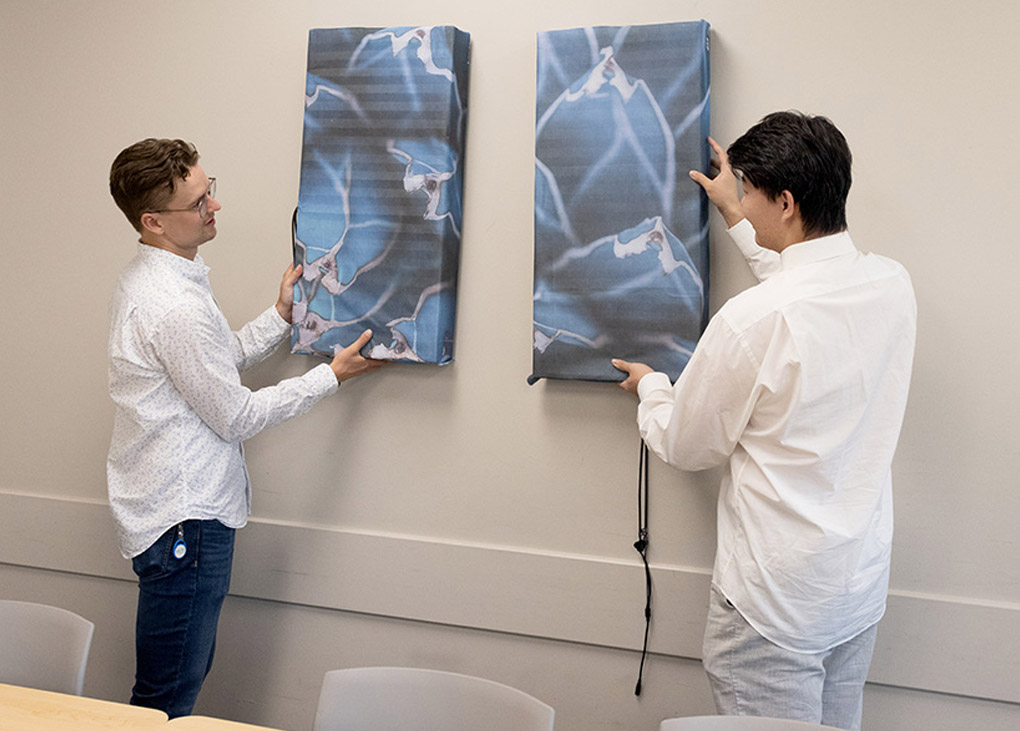Researchers at the University of British Columbia (UBC) Okanagan have created a unique way to improve indoor air quality – using what appears to be a simple artwork, but is in fact an aerosol removing tapestry (or ART).
Since the COVID-19 pandemic, professionals around the world have been studying ways to improve indoor air quality. People are often unaware of how easily small particulate matter from pollutants such as viruses, smoke, pollen and bacteria can enter and damage the lungs.
Practical application
A cross-campus team of researchers at UBC (known as the Airborne Disease Transmission Cluster) developed ART in an effort to create a visually appealing, low-cost and quiet air filtration system.
Led by Dr Jonathan Little, a professor of health and exercise sciences at UBC Okanagan, and Dr Sunny Li (a professor of mechanical engineering), the team says they wanted to create a more practical solution to achieve cleaner air.
“ART is wall-mounted, modular and quiet. It’s almost like it’s built into the room,” says Li.
The team is testing the air filtration system on the university campus. They evaluated the spaces with the highest risk of pollutants and viral spread by taking CO2 measurements, and have installed different ART sizes at various locations to monitor the affects on air quality.
The cluster’s research coordinator, Jake Winkler, believes the UBC Okanagan campus is an ideal location for the testing.
“We’re a close-knit campus that prioritises research, so we can more effectively bring together diverse experts to provide different perspectives,” he says.
“On a subject as complex as indoor airflow, no single academic discipline can solve this problem.”
The researchers have partnered with campus operations staff to install and monitor the innovative solutions.
Exceeding the limit
Although indoor air quality is not as “front of mind” since the pandemic, it still plays a crucial role today. According to the researchers, an estimated 99 per cent of human beings currently breathe air that exceeds the World Health Organization’s guideline limits for pollutants.
“We still have wildfires, vehicle exhaust and production emissions that pollute our air and negatively impact millions,” says Little. “That’s why issues of airflow and indoor air quality are crucial to understand.”
Feature image courtesy of UBC Okanagan.



Leave a Reply